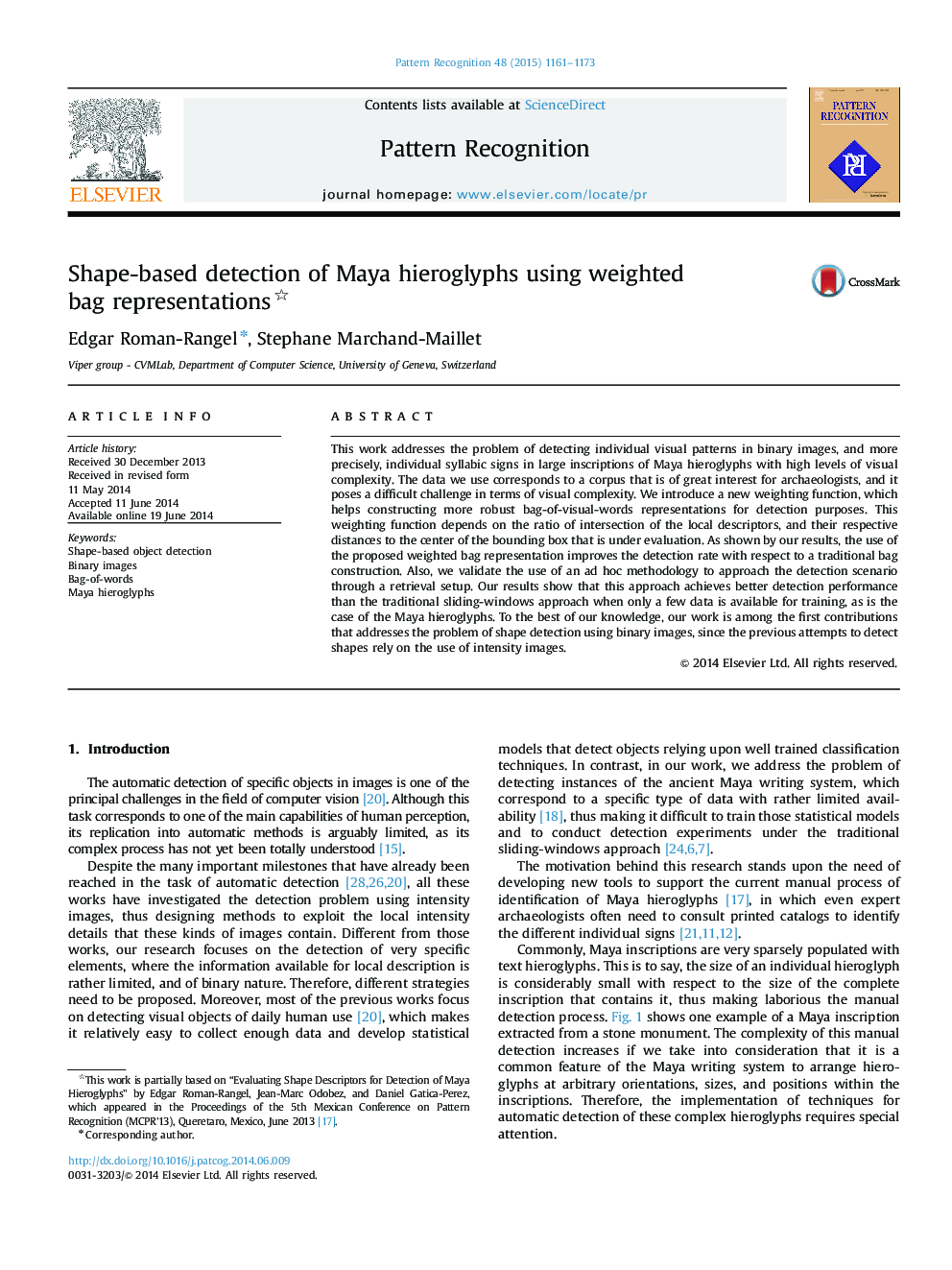| Article ID | Journal | Published Year | Pages | File Type |
|---|---|---|---|---|
| 532024 | Pattern Recognition | 2015 | 13 Pages |
•A uniform sampling improves detection results compared to the DoG point detector.•The previous observation is consistent with the previous works on grayscale images.•A medium-to-small size of characteristic scale is best for shape detection.•The HOOSC method outperforms the SIFT descriptor for description of binary images.•The proposed weighted bag representation is suitable for shape-based object detection.
This work addresses the problem of detecting individual visual patterns in binary images, and more precisely, individual syllabic signs in large inscriptions of Maya hieroglyphs with high levels of visual complexity. The data we use corresponds to a corpus that is of great interest for archaeologists, and it poses a difficult challenge in terms of visual complexity. We introduce a new weighting function, which helps constructing more robust bag-of-visual-words representations for detection purposes. This weighting function depends on the ratio of intersection of the local descriptors, and their respective distances to the center of the bounding box that is under evaluation. As shown by our results, the use of the proposed weighted bag representation improves the detection rate with respect to a traditional bag construction. Also, we validate the use of an ad hoc methodology to approach the detection scenario through a retrieval setup. Our results show that this approach achieves better detection performance than the traditional sliding-windows approach when only a few data is available for training, as is the case of the Maya hieroglyphs. To the best of our knowledge, our work is among the first contributions that addresses the problem of shape detection using binary images, since the previous attempts to detect shapes rely on the use of intensity images.
